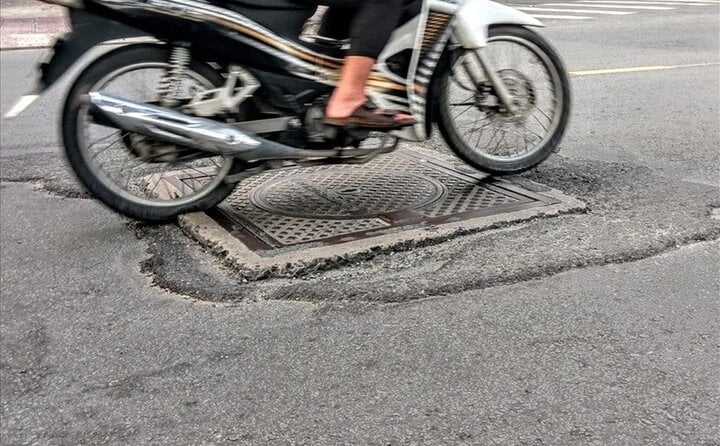Most manhole covers and drain grates are made of metal, which doesn’t offer the same traction as the road surface, hence the problem.
While these covers typically feature a checkerboard-style water drainage system to minimize slipperiness when wet, the constant traffic of vehicles can wear down the surface, reducing its effectiveness. This, in turn, can make the covers even more hazardous when wet.
When riding a motorcycle over these covers in rainy conditions, the tires can lose traction, especially if the road is flooded. This loss of traction can lead to skidding and potential accidents.

Riding over manhole covers in the rain can be dangerous. (Illustrative image)
Heavy rainfall and subsequent flooding can also exert immense pressure on the covers, causing them to shift or even pop open. Riders who aren’t cautious may find themselves falling into an open manhole or losing control of their vehicle, leading to serious accidents.
Flooded roads can also obscure the covers, making it difficult for riders to spot them. This increases the risk of accidentally riding into an open manhole and suffering a fall or collision.
Moreover, if a cover pops open or a vehicle falls into an open manhole, it can cause significant damage to the vehicle, particularly the wheels, suspension, and engine. Therefore, to ensure safety when riding a motorcycle in rainy conditions, it’s best to avoid riding over manhole covers.
In addition to avoiding manhole covers, there are several other precautions riders should take when navigating wet roads:
Vehicle Checks: Inspect your tires as they play a crucial role in your safety. Properly inflated tires with adequate tread depth will provide better traction on wet roads. Worn-out tires with insufficient tread can reduce traction, making it hazardous to maneuver or brake suddenly.
Ensure your tire pressure is at the recommended level. Overinflated tires have a smaller contact patch with the road, reducing traction. You may slightly underinflate (~2 psi) to increase the contact patch and improve traction. However, avoid excessively deflating tires in wet conditions to prevent tire wall damage.
Visibility: Opt for bright-colored rain gear with reflective strips to enhance your visibility to other vehicles. Ensure your rainwear is fitted and doesn’t obstruct lights, handles, or controls. During daytime rides in the rain, keep your headlights on to improve visibility and reduce risks.
Gentle Maneuvers: Wet roads reduce traction, so avoid sudden acceleration, braking, or sharp turns, as these actions can cause skidding and loss of control. Ease up on the throttle, maintain a safe distance, and always be vigilant. Especially refrain from hard braking when navigating curves.
Water Puddles: When encountering water puddles, reduce speed gradually and shift to a lower gear if necessary. Only accelerate once you’ve passed the puddle. Riding too fast through deep water can cause engine issues, as water may enter the spark plug, leading to engine stalling and potential damage.
Post-Rain Care: Even if your vehicle performs well after riding through flooded roads, it’s advisable to get it washed soon after. Rainwater can corrode metal parts, especially the exhaust and drivetrain. Also, consider changing your engine and transmission oil, as contaminated oil can severely impact the performance and longevity of these components.
According to VTC News

































